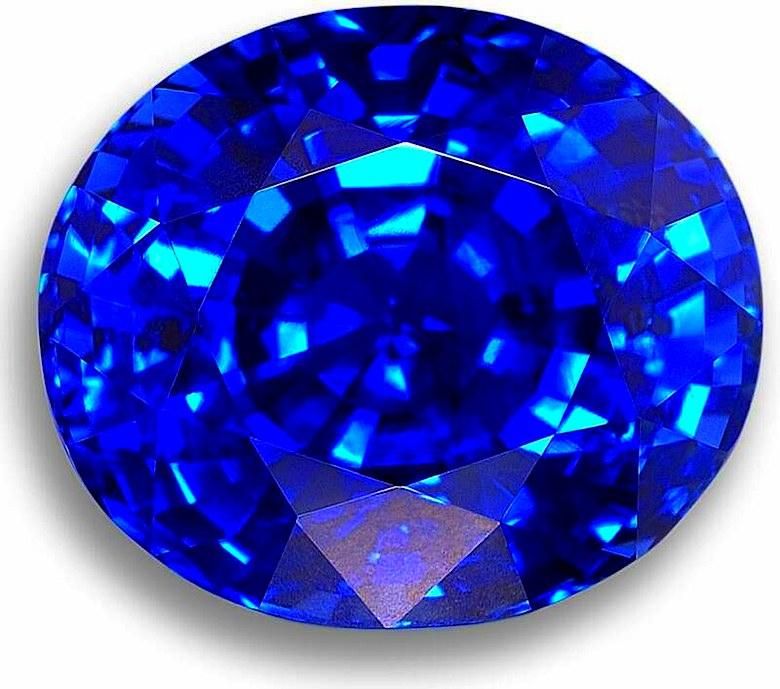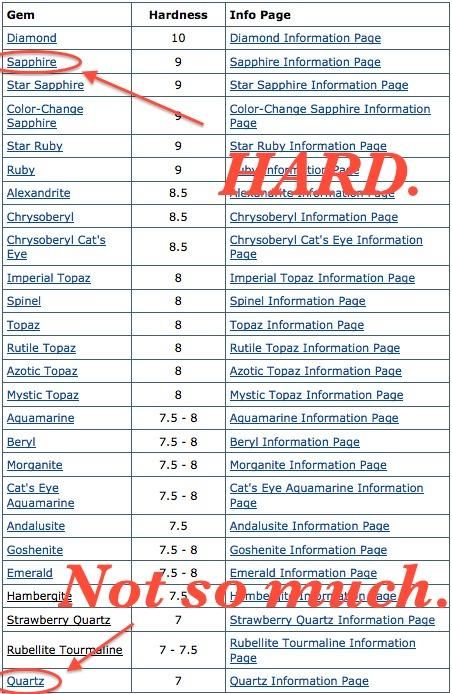Last month at MWC, we were treated to a rather compelling demonstration: a smartphone screen made of material so tough, it was practically un-scratchable. The company providing the demo was GT Advanced Technologies, and the screen was made of a material you’ve probably heard of, but in other contexts: sapphire.
In an industry where hardware is fast becoming the differentiator of choice, “sapphire” is the new buzzword for legions of excitement-seeking tech fans. We’re going to take a closer look at how synthetic sapphire comes into being, and how it finds its way into smartphones, next week: our friends at GT Advanced have graciously invited us to tour their facility outside of Boston, and we’ll be bringing you the video of our time at the factory shortly thereafter. Until then, let’s review exactly why sapphire is this month’s material of techno-lust, and why it’s likely to give incumbent glass screen makers a run for their money.
Update: Our GT Crystal Systems factory tour happened, and it was just as magical as we dreamed it would be. Check out the video here.
The short story, if you’re not in the mood to watch some beefy Barcelona concrete get spanked by an ultra-thin layer of transparent material in the above video, is this: Sapphire is hard. Really hard. The lab-grown material we’ll see in our factory tour next week is said to be two to two-and-a-half times stronger than Corning Gorilla Glass.
Unfortunately, that doesn’t mean much in terms of its resistance to droppage, the all-time best destroyer of smartphone displays: sapphire is a brittle material which, given enough impact energy, will shatter just like glass if dropped onto a hard surface at the right (or wrong) angle. But it does mean that sapphire-built displays would be much more resistant to scratches and nicks from all manner of objects. From keys and coins in pockets to rogue grains of quartz sand in a beach bag, a display made of super-hard sapphire would theoretically shrug off scrapes from most anything you could throw at it. That’s unless you routinely cart diamonds around in your satchel, in which case you probably already own a sapphire-screened Vertu anyway.
Very scientific comparison of hardness, sapphire-versus-sand (quartz).
So why haven’t manufacturers already kicked Corning to the curb and embraced this miracle mineral as their panel protector of choice? The problem, as GT Advanced’s Jeff helpfully points out in the video above, is cost. Gorilla Glass runs around $3 per smartphone display, whereas an identical screen made of sapphire would run about $30. That tenfold increase in cost is an especially bitter pill to swallow, especially when you take into account the next-generation Gorilla Glass 3 technology will doubtless be cheaper, and it’s rumored to be twice as resistant to scratches as the current Gorilla Glass 2. Sapphire would thus be a tough sell for smartphone manufacturers, goes the common logic.
Here’s the thing, though: isn’t the significance of that increased cost overstated, just a little? Put aside the volume order discounts and the other complexities of manufacturer/component-supplier relationships for a second, and imagine that OEMs could pass all of the added cost on to the consumer. Wouldn’t you, as a consumer, be willing to spend an extra $30 on your smartphone -a device you buy perhaps once per year, if not once every two- to prevent situations like my scratched-up Lumia 920 screen?
As I say in the video, that’s not even an extreme case. The 920 holds up better than some other smartphones to face-down landings on hard surfaces; we’ve all seen much worse.
That’s assuming that smartphone manufacturers were able to market the added benefit effectively, of course. And even if they were, it’s possible that consumers really would recoil in horror at the prospect of spending an extra three Hamiltons on a smartphone just because it sports a new display technology. No matter what added features come to the table, or how practically useful they are, many people will remain reluctant to spend more money. Some of them legitimately aren’t able to. Which is part of the reason sapphire displays haven’t caught fire quite yet, and why it will likely take manufacturing cost reductions to change that.
In the meantime, other technologies like the aforementioned Gorilla Glass 3 -and more exotic alternatives like graphene- aren’t likely to take the arrival of sapphire-based competiton lying down. We’ll hopefully have more thoughts on how the sapphire industry plans to break its way in, as well as a more technical analysis of the science behind the super-hard displays, after our factory tour next week. In the meantime, sound off in the comments below about whether you’d be willing to spend the extra money for an almost-unscratchable screen, and try to keep your smartphone out of your change purse while you’re at it.
__
Sources: Technology Review, Discovery, The Motley Fool
Hardness chart source: GemSelect


